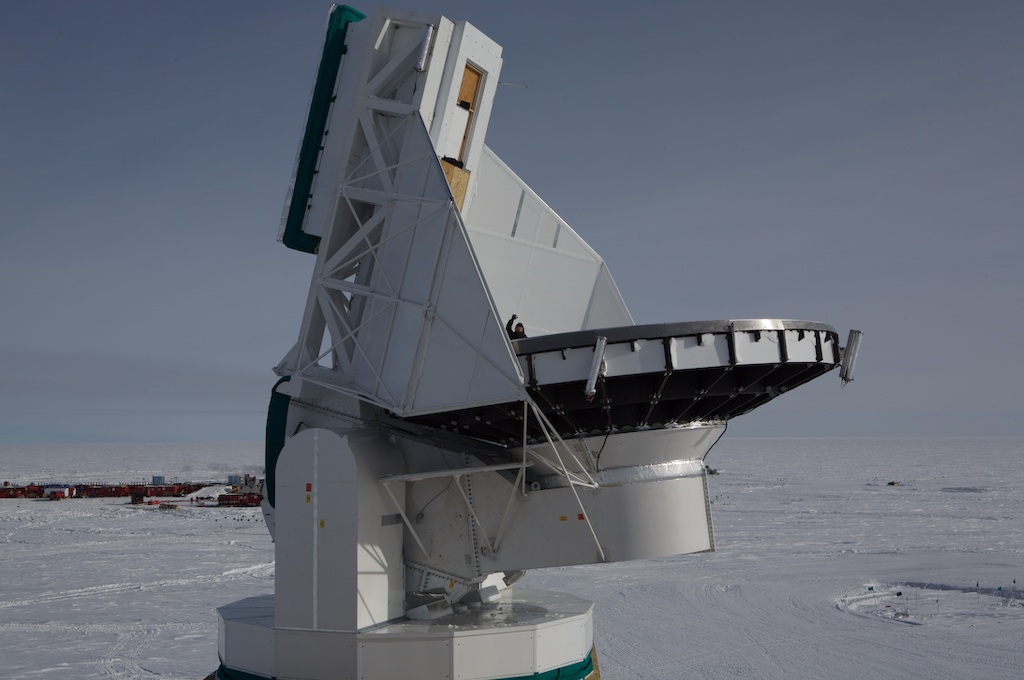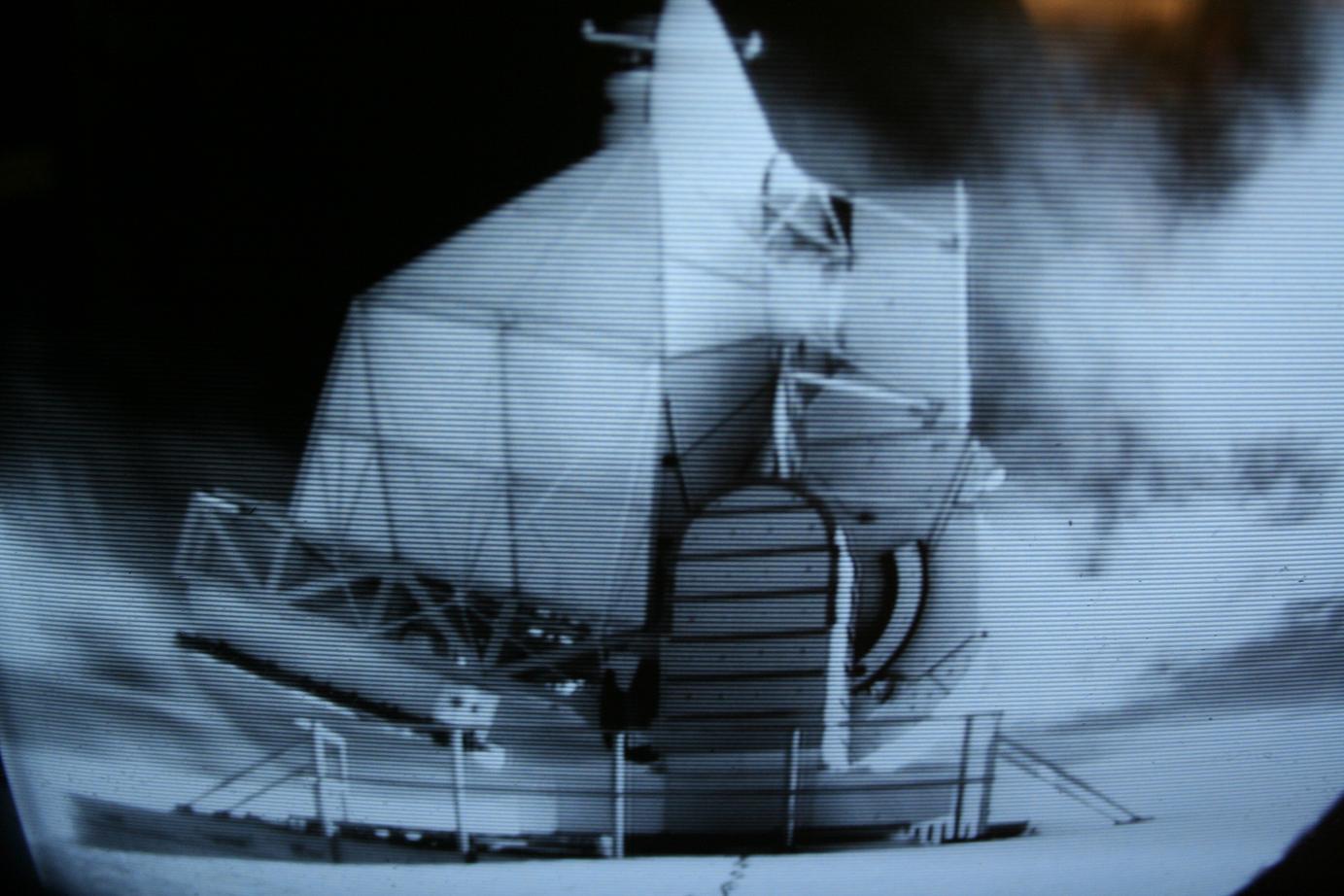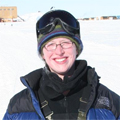SPT TV
Last week, I had the opportunity to drive the telescope around a lot. We’re not actively observing, but we are making many upgrades to the software that controls the telescope, and trying to debug little things that didn’t work as smoothly as we liked last season. The only time of day when I could do this was between the night and day shifts, for a couple of hours when nobody else needed access. All season we have been working on insulating the telescope and doing a better job of sealing the inside of the instrument (and the lab) from the elements. This work requires keeping the telescope stationary and often “docked,” meaning that it is parked above the control room so that we can get access to the cabin that normally holds the receiver. So I had to squeeze in between the day and night shifts of carpenters and SPT scientists who might need to work around the telescope.

The massive telescope—with me on top for scale. (To read the dispatch on why I was on top of the telescope in the first place, click here.) The telescope is 75 feet (22.8 meters) tall, 33 feet (10 meters) across, and weighs 280 tons (254 metric tons.)
For a few days, I went out and undocked the telescope and moved it around a bit to do some motion tests with various changes to the software. Moving the telescope involves issuing commands by computer from inside the lab. There is something truly awesome (and very intimidating) about having an instrument of this size under your control. First of all, it can be downright terrifying. The thing moves at an improbably high speed. It is massive! You can’t imagine what it’s like to see a thing of that size move so fast, and so smoothly, until you have witnessed it. Operating something that large is just sort of scary. Especially when (as was the case last week) some of the software changes led at first to unpredictable behavior. One of the stranger things is that if you are moving the telescope from inside the control room (which is directly under it), you can’t see where the telescope is going. You can see the inside moving (the gears are awesome, and the entire roof rotates if you swing the thing around in azimuth), but it is nevertheless unnerving not being able to see where it points.
So, I was quite happy when Erik Leitch brought over a camera and a little TV monitor and installed them. It’s an old camera and an old TV previously used to keep an eye on the DASI telescope.

SPT TV!
It was a great improvement during the motion tests last week, if only to keep me from getting too jumpy! But there was something inherently funny about having an old black-and-white TV monitor in the midst of our otherwise high-tech and state-of-the-art laboratory.

 No comments
No comments 







